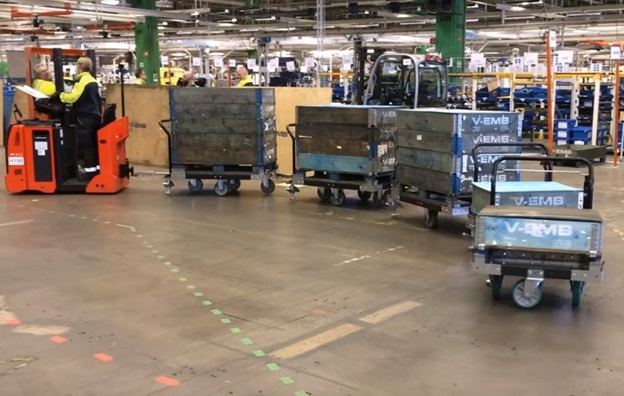
Automation, Control & Plant Intelligence - Articles, Analysis, Reviews, Interviews & Views

 Beneficial for Workers
The ergonomic design of tow tractors is beneficial to workers. With the help of tow trucks, people can move heavy carts without strain. Workers no longer experience the same fatigue they get from using forklifts. The stay alert and productive for a longer period.
Unlike forklifts, tugger trucks are easy to use so anyone can operate them. They allow more flexibility in workstations since the products can be moved from one location to another by anyone who is available. The products are also safer since the loads are simply attached to carts. The truck allows visibility for drivers. It can maneuver around tight turns and does not tip over.
The latest OSHA statistics indicate there are more than 100 forklift fatalities and 34,900 serious injuries each year, with 42 percent of the forklift fatalities from the operators being crushed by a tipping vehicle. Automating to a tugger pulling carts saves lives.
Beneficial for Workers
The ergonomic design of tow tractors is beneficial to workers. With the help of tow trucks, people can move heavy carts without strain. Workers no longer experience the same fatigue they get from using forklifts. The stay alert and productive for a longer period.
Unlike forklifts, tugger trucks are easy to use so anyone can operate them. They allow more flexibility in workstations since the products can be moved from one location to another by anyone who is available. The products are also safer since the loads are simply attached to carts. The truck allows visibility for drivers. It can maneuver around tight turns and does not tip over.
The latest OSHA statistics indicate there are more than 100 forklift fatalities and 34,900 serious injuries each year, with 42 percent of the forklift fatalities from the operators being crushed by a tipping vehicle. Automating to a tugger pulling carts saves lives.
The safety of heavy-duty carts has a positive impact on overall productivity and cost. There are no known major accidents caused by tugger train systems. The ergonomic design reduces injuries and musculoskeletal disorders; workers experience less fatigue and fewer injuries. There are fewer absences and lower workers' compensation insurance claims.The latest OSHA statistics indicate there are more than 100 forklift fatalities and 34,900 serious injuries each year, with 42 percent of the forklift fatalities from the operators being crushed by a tipping vehicle. Automating to a tugger pulling carts saves lives.
 The Fork Truck Free (FTF) Trend
The automation and safety benefits explain the developing trend towards reducing forklift usage and even ultimately going completely fork truck free (FTF). Operational costs for fork trucks define an expensive piece of equipment on the plant floor. Migrating to an automated material flow process means that maintenance, repairs, and fuel costs can curb a significant expense from a company's budget. Additionally, the salary paid to forklift operators who undergo specialized training and certification before authorized to operate fork trucks explains the FTF trend.
The Fork Truck Free (FTF) Trend
The automation and safety benefits explain the developing trend towards reducing forklift usage and even ultimately going completely fork truck free (FTF). Operational costs for fork trucks define an expensive piece of equipment on the plant floor. Migrating to an automated material flow process means that maintenance, repairs, and fuel costs can curb a significant expense from a company's budget. Additionally, the salary paid to forklift operators who undergo specialized training and certification before authorized to operate fork trucks explains the FTF trend.

YOU MAY LIKE:
Popular Articles
Manufacturing Insights